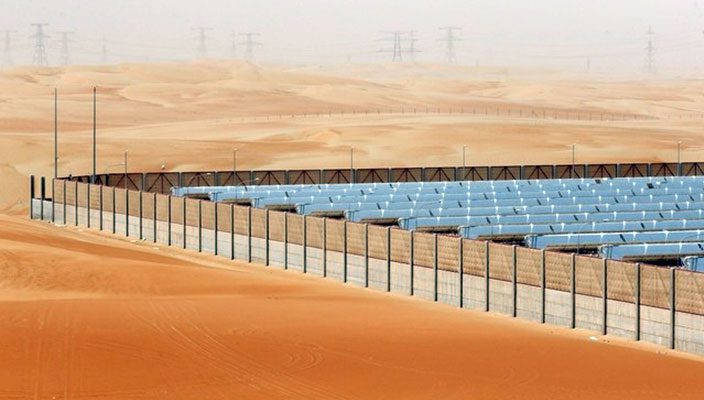Did you know that nearly $250 billion has been invested in renewable energy worldwide every single year for the last three years? That devotion and investment is no different in the UAE, where national-level commitments drive the adoption of renewable energy across the region.
As the first county in the Middle East to ratify the landmark Paris Agreement AND the country to set record prices for solar power not once but twice, the UAE has committed to a number of policies and initiatives to tackle climate change while also contributing to diversification of the economy away from oil. Not only is economic diversification vital in this part of the world, but energy demand is increasing at some of the highest rates we’ve experienced as our economy becomes more and more sophisticated. According to a report by the International Renewable Energy Association (IRENA), The GCC is in the middle of an extraordinary surge in energy consumption, rising on average some 5 percent year.
UAE Vision 2021
UAE Vision 2021 was launched in 2010 by H.H. Sheikh Mohammed bin Rashid Al Maktoum, Vice-President and Prime Minister of the UAE and Ruler of Dubai. It aims to make the UAE among the best countries in the world by the Golden Jubilee of the Union. In order to translate the Vision into reality, its mapped out six priority pillars that represent the key focus sectors of government action in the coming years. One of its key pillars is undoubtedly sustainable environment and infrastructure. The UAE aims to ensure sustainable development while preserving the environment to achieve a perfect balance between economic and social development. The agenda calls for a focus on improving the quality of air, preserving water resources, increasing the contribution of clean energy and implementing green growth plans. Further, the agenda highlights the importance of infrastructure and aims for the UAE to be a leader in the quality of airports, ports, road infrastructure, and electricity.
UAE Energy Strategy 2050
In January 2017, Vice President and Prime Minister and Ruler of Dubai, His Highness Sheikh Mohammed bin Rashid Al Maktoum, unveiled the UAE energy strategy for the next three decades. The new strategy aims to increase the contribution of clean energy in the total energy mix to 50 percent, thus saving AED700 billion ($190.6 billion) by 2050. With an investment of AED600 billion ($163.5 billion) by 2050, The UAE Energy Strategy targets an energy mix that combines renewable, nuclear and clean energy sources. The energy equation targeted by the 2050 strategy is as follows: 44 percent clean energy, 38 percent gas, 12 percent clean coal and 6 percent nuclear. The strategy also aims to change the energy consumption culture through slashing residential and corporate energy consumption by 40 percent.
National Climate Change Plan 2050
This summer, the UAE Cabinet also endorsed the National Climate Change Plan 2050. The plan aims to emphasize UAE’s proactive approach towards sustainable development, while integrating efforts to bridge gaps and strengthen cooperation between the public and private sectors.
It has three core objectives:
1. Manage greenhouse emissions while sustaining economic growth
2. Build climate resilience through minimizing risks and increasing capacity for climate adaptation
3. Advance the UAE’s economic diversification agenda through innovative solutions
Through these interlinked goals, the Plan promises to enable the nation to achieve continuous growth even while addressing the complexity of climate change, thereby facilitating the transition toward a climate-resilient green economy. These ambitious goals don’t stop at the UAE borders. Neighboring nations are also taking note. Saudi Arabia, for example, has pledged a target of 9.5GW renewable energy target by 2023. In Morocco, we’re seeing a 42 per cent pledge by 2020. And in India, they’ve pledged a 175 GW pledge by 2022.
As communications consultants, it’s important to not only understand the political landscape but also counsel our clients how their initiatives – both globally and at the local level – support national agendas.
